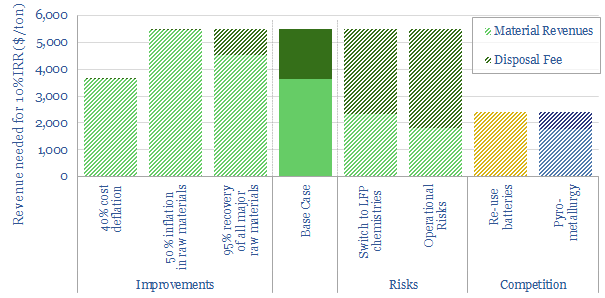Search results for: “companies”
-
Inspection costs: drones versus traditional quality control?
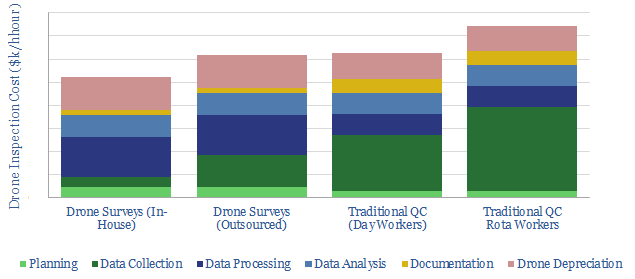
This data-file estimates the costs of drone inspections, for the construction and resources industries, using bottom-up numbers from technical papers. Costs per hour can be 30% lower than for traditional quality control. A single drone, including software licenses likely costs c$30k.
-
Oil demand: the rise of autonomous vehicles?
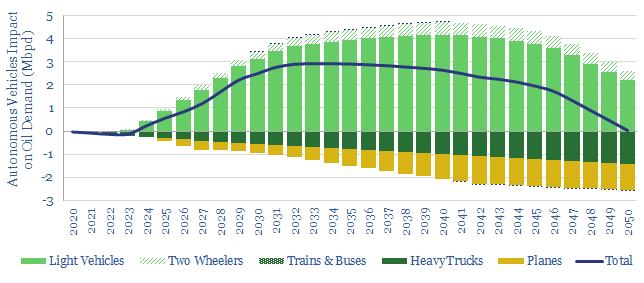
We are raising our medium-term oil demand forecasts by 2.5-3.0 Mbpd to reflect the growing reality of autonomous vehicles. AVs improve fuel economy in cars and trucks by 15-35%, and displace 1.2Mbpd of air travel. But their convenience also increases travel. This note outlines the opportunity.
-
Next-generation plastics: bioplastic, biodegradable, recycled?
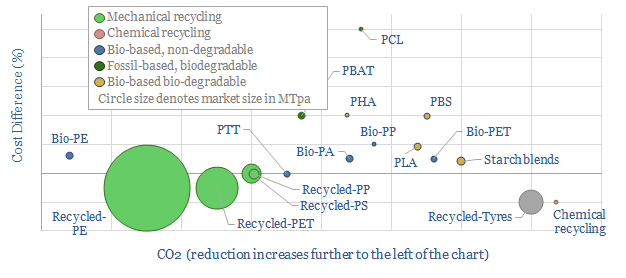
This data-file captures 17 plastic products derived from mechanical recycling, biologically-sourced feedstocks or that is bio-degradable. The ‘greenest” plastics are c30% lower in CO2 than conventional plastics, but around 2x more costly.
-
Offshore offsets: nature based solutions in the ocean?
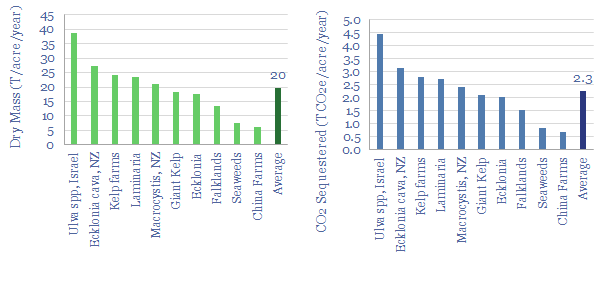
Nature based carbon offsets could migrate offshore in the 2020s, sequestering 3GTpa of CO2 for a prices of $20-140/ton. In a more extreme case, if CO2 prices reached $400/ton, oceans could potentially decarbonize the whole world. This 19-page note outlines the opportunity in seaweed and kelp.
-
Biochar: burnt offerings?
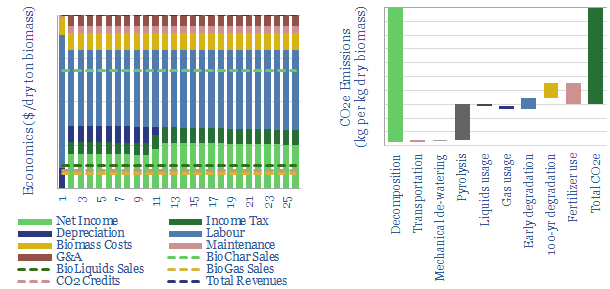
Biochar is a miraculous material, improving soils, enhancing agricultural yields and avoiding 1.4kg of net CO2 emissions per kg of waste biomass. IRRs surpass 20% without CO2 prices or policy support. Hence this 18-page note outlines the opportunity.
-
Gas treatment: an overview?
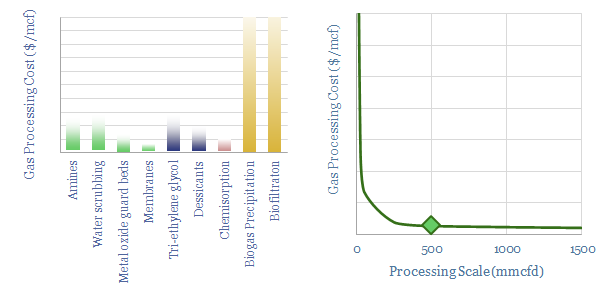
This data-file gives an overview of gas sweetening and treatment processes. The main method is chemical absorption using amines. We estimate that a mid-size facility of 500mmcfd must levy a $0.15/mcf cost and emits 3.5kg/boe to take out c7% H2S and CO2. Other processes are compared.
-
Energy efficiency of motors and power generators?
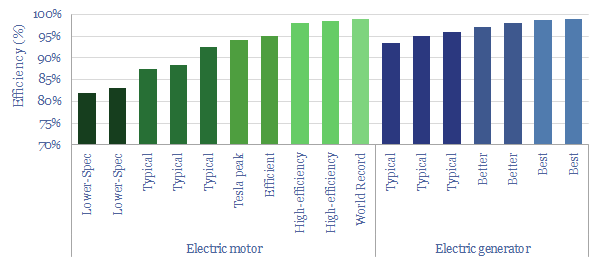
This data-file estimates the efficiency of electric motors and power generators, using specific examples and data-points. This matters as there are around 50bn motors in the world, consuming c45% of global electricity. Efficiency ratings are generally high, above 90%, although lagging and non-optimized motors can be in the 70-80% range.
-
Gas turbines: what market size in energy transition?
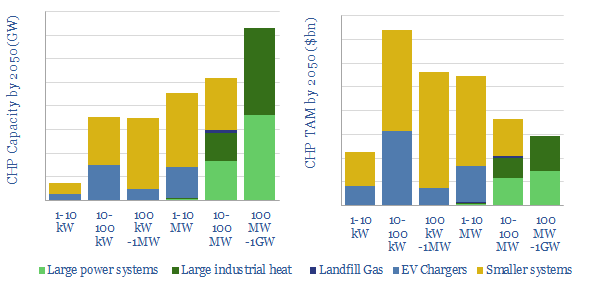
CHP systems are 20-30% lower-carbon than gas turbines, as they capture waste heat. They are also increasingly economical to backstop renewables. Amidst uncertain policies, the market size for US CHPs could vary by a factor of 100x. We nevertheless find 30 companies well-placed in a $9trn global market.
-
Windy physics: how is power of a wind turbine calculated?
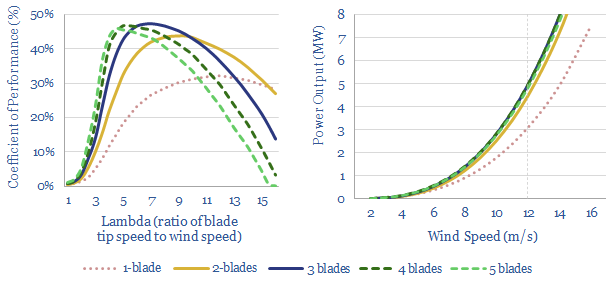
This data-file is an overview of wind power physics. Specifically, how is the power of a wind turbine calculated, in MW, as a function of wind speed, blade length, blade number, rotational speed (in RPM) and other efficiency factors (lambda). A large, modern offshore wind turbine will have 100m blades and surpass 10MW power outputs.
Content by Category
- Batteries (84)
- Biofuels (42)
- Carbon Intensity (49)
- CCS (63)
- CO2 Removals (9)
- Coal (36)
- Company Diligence (85)
- Data Models (790)
- Decarbonization (156)
- Demand (103)
- Digital (50)
- Downstream (44)
- Economic Model (194)
- Energy Efficiency (75)
- Hydrogen (63)
- Industry Data (260)
- LNG (48)
- Materials (77)
- Metals (69)
- Midstream (43)
- Natural Gas (144)
- Nature (75)
- Nuclear (22)
- Oil (161)
- Patents (38)
- Plastics (43)
- Power Grids (116)
- Renewables (147)
- Screen (107)
- Semiconductors (30)
- Shale (50)
- Solar (67)
- Supply-Demand (45)
- Vehicles (88)
- Wind (40)
- Written Research (332)
Show More

